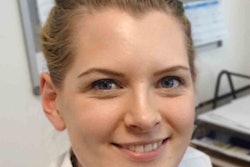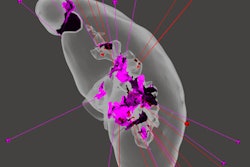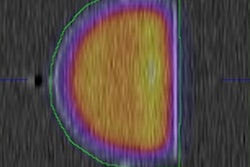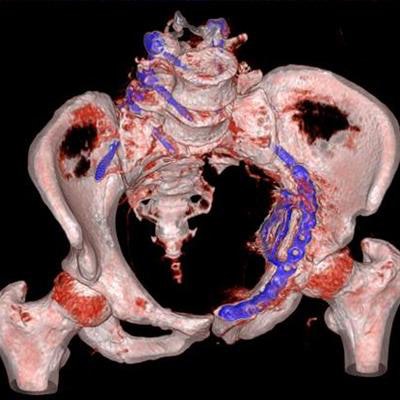
Three-dimensional printing represents a valuable addition to the radiological report, and along with virtual reality, it will play an increasing role in conveying information to referrers, Swiss experts believe.
"Three-dimensional printing enhances the understanding of complex pathologies for referring physicians, residents, students, and patients," noted lead author Dr. Philipp Brantner, a senior physician in cardiac and thoracic diagnostics at Basel University Hospital, in an e-poster presentation at RSNA 2016. "Three-dimensional printing is a valuable and well-appreciated addition for many referring disciplines."
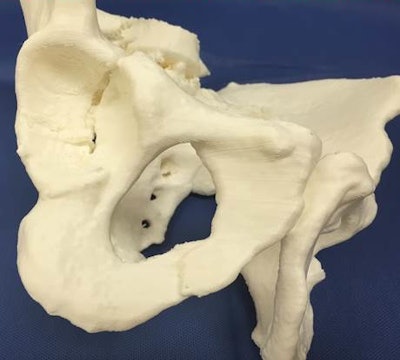 3D-print of a complex acetabular fracture, the nonfractured side was mirrored over to the fractured side. All images courtesy of Dr. Philipp Brantner.
3D-print of a complex acetabular fracture, the nonfractured side was mirrored over to the fractured side. All images courtesy of Dr. Philipp Brantner.Reconstructing objects by means of 3D printing serves a useful role by helping to select the appropriate imaging modalities and protocols, and provide and prepare image data for surgery, he stated.
Virtual reality and simulation, model-based preoperative preparation, and data for creation of patient-specific implants can also add value, and providing 3D-models may enhance patients' understanding of complex pathologies and procedures. However, segmentation remains a challenge and requires in-depth anatomical knowledge as well as software skills -- core skills of radiology, according to Brantner and his colleagues.
Meeting software needs
Three-dimensional models can be generated from most cross-sectional imaging datasets in CT and MRI with already present or freely available software, but it is essential to understand the technical and software requirements, to comprehend the process of turning a volumetrical dataset into a 3D print, and to determine which specialties might benefit from 3D printing, the authors continued.
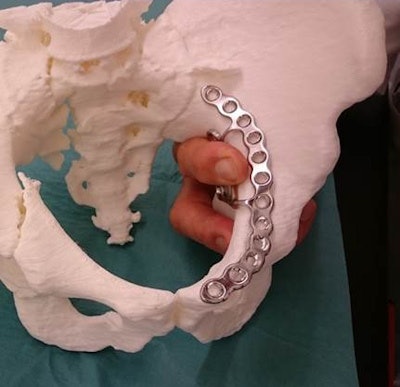 Above: Preoperative modeling of the osteosynthesis plate to reduce operating room time and ensure an optimal fit. Below: Intraoperative view.
Above: Preoperative modeling of the osteosynthesis plate to reduce operating room time and ensure an optimal fit. Below: Intraoperative view."Today, entry-level 3D printers can be bought for less than 2,000 euros. Multislice imaging, certainly CT but increasingly MRI, provides sufficient spatial resolution as the basis for segmentation," they stated. "Segmentation software is often already incorporated within common radiology visualization solutions or can be downloaded free of charge from the internet."
Once a simple workflow has been established, the entire system is scalable to the needs of the department and the hospital. Furthermore, the demand for 3D-printing and virtual reality may increase in the future because it provides a multitude of new opportunities in medicine from visualization findings to creating implants and templates, according to Brantner and colleagues.
The potential benefits of 3D printing include improved understanding of complex anatomical relationships because of the spatial representation, "tangible" anatomy, templates (e.g., fitting osteosynthesis material to a 3D print in an office setting prior to surgery to reduce procedure time), procedure training, and better education of patients, medical students, and residents.
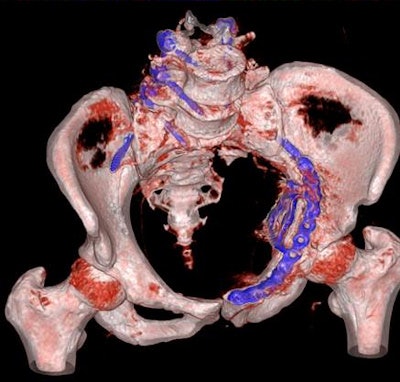 Postoperative CT scan showing the implanted plate.
Postoperative CT scan showing the implanted plate.The main requirements are isotropic data (most cases from CT or MRI), segmentation software (e.g., 3D slicer) able to export a volumetric object as STL file format, slicing software (included with the printer), and entry-level 3D printer (most models use fused filament fabrication, FFM), they explained.
What works well in 3D printing?
High-contrast objects tend to work well in 3D printing, particularly bones, contrast agents, vasculature, and high-resolution isotropic data. The cons are motion artifacts, tissues of similar contrast, and delicate structures requiring lots of printed supports. Also, printing different colors and materials remains expensive, and the challenge is to extract the right tissue structure, added Brantner and colleagues.
The major referrers for 3D printing are urology, cardiology, cardiac surgery, vascular surgery, craniomaxillofacial surgery, neurosurgery, orthopedics, and pulmonology.
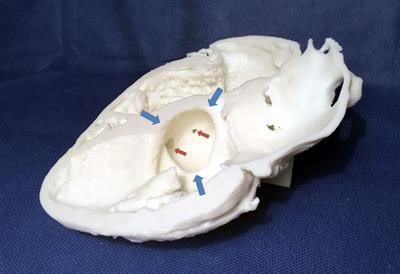 3D-printed heart, cut out to create a four-chamber axis showing an inferoseptobasal aneurysm (blue arrows) with two small ventricular septal defects (red arrows).
3D-printed heart, cut out to create a four-chamber axis showing an inferoseptobasal aneurysm (blue arrows) with two small ventricular septal defects (red arrows).The authors gave some examples of potential applications of 3D printing in the following areas:
- Cardiac surgery: In the case of a septal metastasis of a malignant melanoma, a 3D-print based on an electrocardiogram-triggered, contrast-enhanced CT scan aided visualization of the tumor, helped facilitate the preoperative planning, and was used for patient education. The segmented tumor matched the resected specimen.
- Pulmonology: Anatomic relationship of a small peripheral tumor in regard to the bronchi. A hollow, high-resolution resin, 3D print allowed the pulmonologist to better plan the bronchoscopy and was used as a guiding reference for orientation during the procedure. It was also used for training purposes.
- Urology: In a case of renal cell cancer, the 3D print-based multiphasic CT scan, hand-colored after printing, boosted visualization of the tumor and facilitated the preoperative planning for the kidney vasculature and the ureter. In another case of renal cell cancer, 3D printing facilitated preoperative planning and permitted nephron-sparing robotic surgery.
- Orthopedics: 3D-print mirrored the original size of a complex fracture of the right hemipelvis. The mirrored print made it possible to use the nonfractured side as a template for the preoperative bending of the osteosynthesis plates, thereby saving time and increasing accuracy.
For more information, contact the authors at this email: [email protected].





